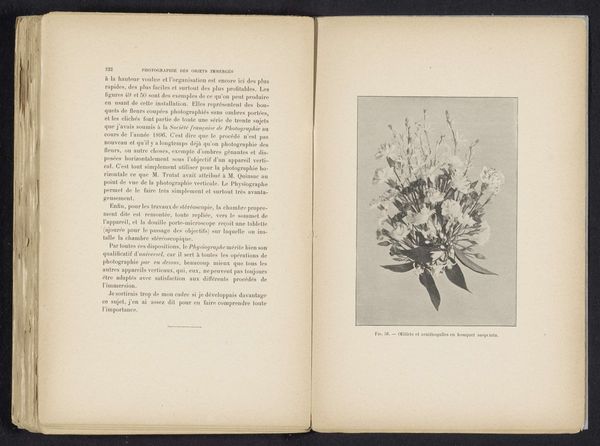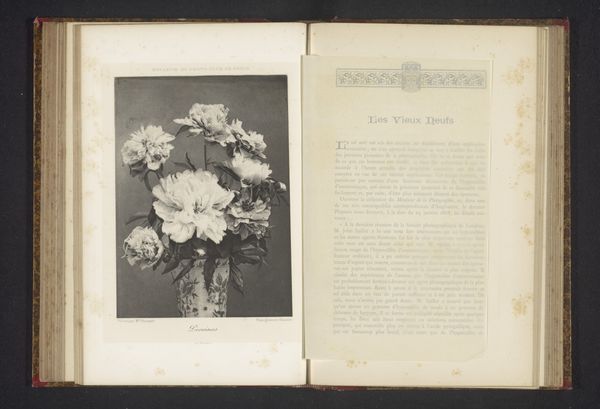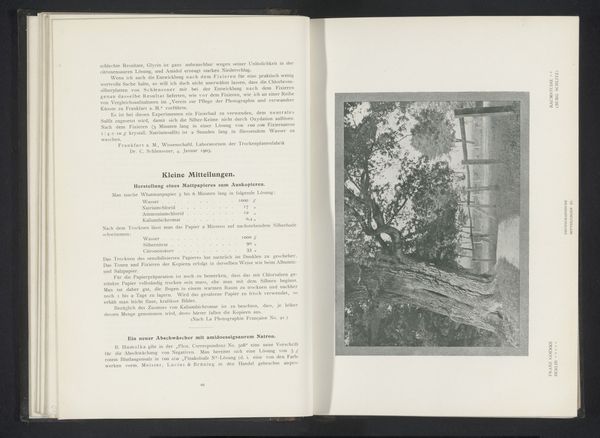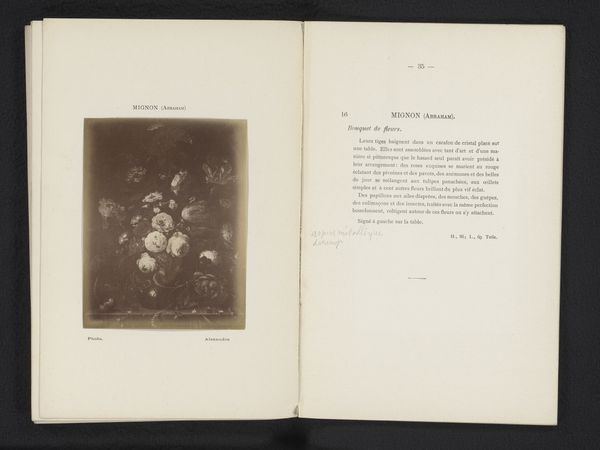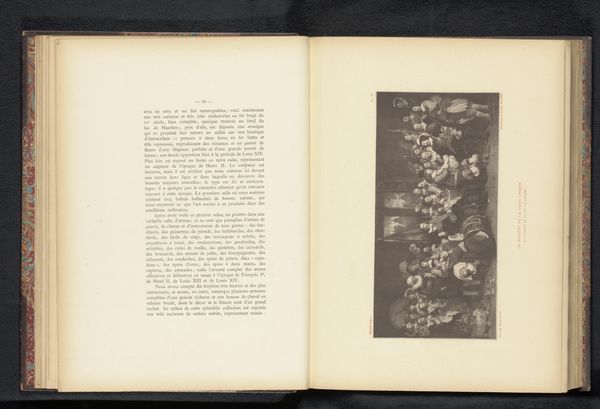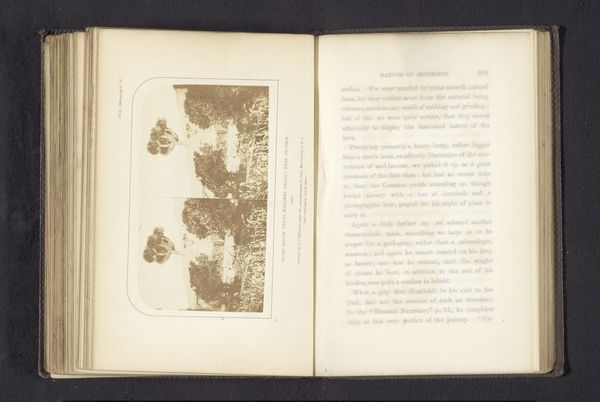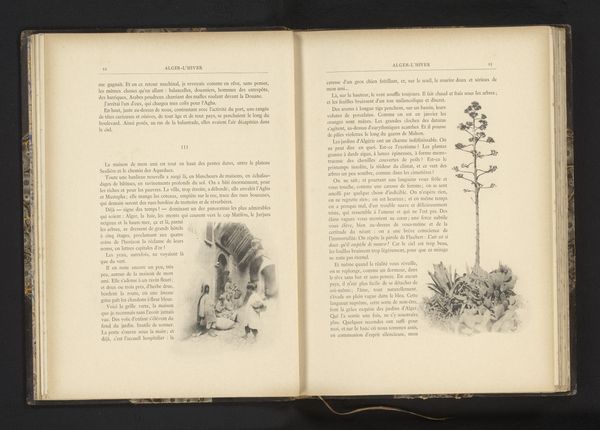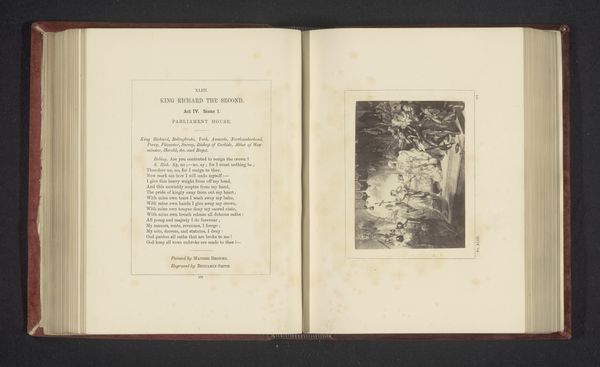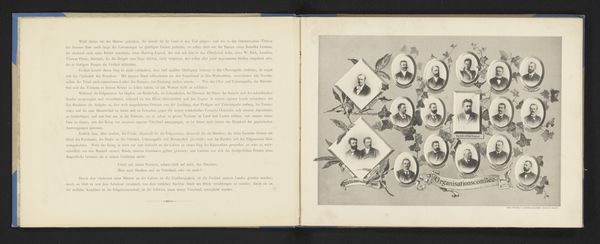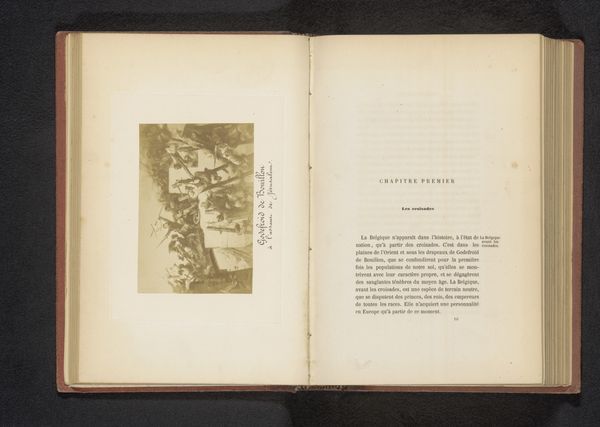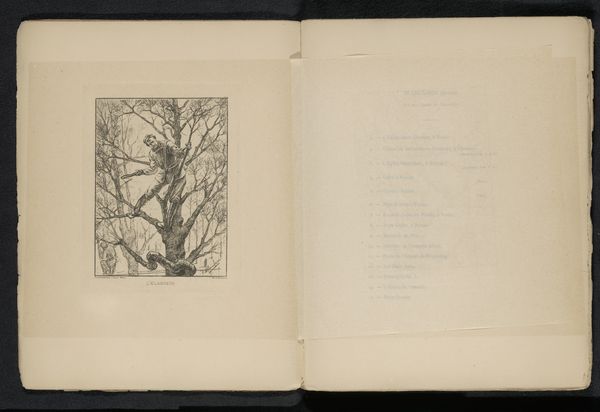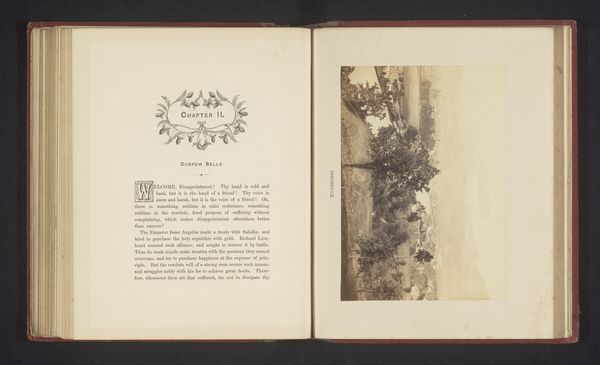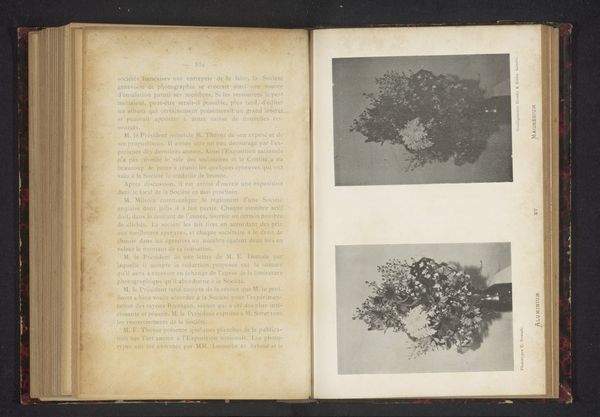
print, photography, gelatin-silver-print
#
still-life-photography
# print
#
photography
#
gelatin-silver-print
Dimensions: height 100 mm, width 170 mm
Copyright: Rijks Museum: Open Domain
Curator: Material analysis takes center stage here. "Tros rode bessen," a gelatin silver print from before 1891, offers a window into photographic processes of the era. Editor: It's quite lovely! Seeing this photograph displayed within the pages of a book gives it such a different feel than a framed print. What details jump out at you? Curator: The book format speaks volumes about dissemination and consumption of photography at the time. It suggests an audience seeking information or reference material rather than solely aesthetic pleasure. How does the use of gelatin silver, as opposed to earlier photographic methods, affect your perception? Editor: Hmm... Well, I know that the gelatin silver process allowed for sharper images with greater tonal range. Looking at this print, you can really appreciate the detail of the leaves and berries. So it prioritizes realistic representation? Curator: Exactly. Consider also the role of labor involved. Someone had to cultivate the berries, process the photographic materials, and bind the book. Does appreciating those production values add to your interpretation of the piece? Editor: Definitely! It brings a new perspective to the artwork as a constructed object and how all of these materials and processes add to our viewing. It’s more than just a photograph; it’s a product of so many different processes! Curator: Precisely! Focusing on the materiality allows us to understand art as embedded within complex social and economic networks. It moves beyond just subject matter and pushes us toward the systems that allowed the artwork to exist.
Comments
No comments
Be the first to comment and join the conversation on the ultimate creative platform.
